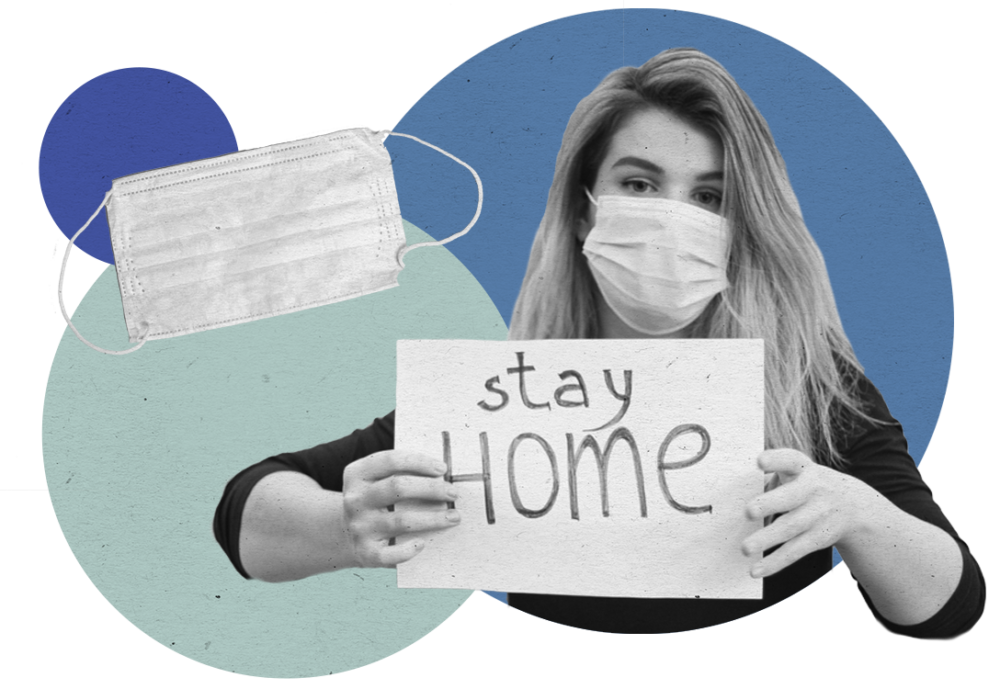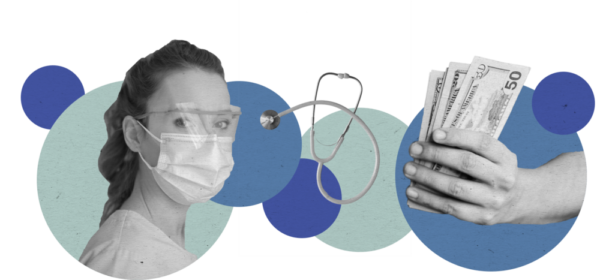Two Different Worlds
Fox Valley hospitals navigate a new era of health care amid COVID-19 pandemic
The global pandemic has affected nearly every facet of life, including the way health care is administered and accessed. Hospitals and clinics are now grappling with the devastating impacts of COVID-19, while still providing essential care to their communities.
In March, hospitals around the country began postponing and canceling elective surgeries and non-urgent medical procedures to make room for patients with respiratory illness while also conserving supplies and labor. This impacted health organizations of all sizes, including the Fox Valley’s two largest hospital systems, Ascension Wisconsin and ThedaCare, as well as independent practices.
Simultaneously, social distancing efforts implemented by federal, state and local governments worked to control the spread of COVID-19, buying hospitals much needed preparation time.
While some Wisconsin communities were hit harder by the virus, Dr. Imran Andrabi, president and CEO of ThedaCare, says the Fox Valley “phenomenally dodged” a major COVID-19 outbreak this spring due to these social distancing measures.
“Kudos to people in this community who took that to heart. It tremendously impacted our ability to prepare effectively,” Andrabi says.
Unprecedented Challenges
Staying home and ceasing elective medical procedures undoubtedly had a positive impact on slowing the virus’s spread in the Fox Cities as well as the ability of local hospitals to adequately prepare for an influx of patients. However, these measures have come with a big price tag.
According to an American Hospital Association report released in May, hospitals in the U.S. are facing an estimated $202 billion in losses between March 1 and June 30. Of that $202 billion, $161.4 billion is the result of canceled hospital services such as surgeries and outpatient treatment.
Fox Valley hospitals have not been left unscathed. Ascension Wisconsin operates 24 hospital campuses, more than 100 related healthcare facilities and employs more than 1,300 primary and specialty care clinicians from Racine to Eagle River. Dr. Greg Brusko, chief clinical officer for Ascension Wisconsin, estimates that from March through May of this year, the hospital system canceled between 5,000 and 10,000 non-urgent procedures and surgeries statewide.
“The impact of that, considering the majority of revenue comes from procedures, is we had substantial revenue loss,” he says. “Clearly, every health system got hit hard.”
Jennifer Szczytko is the director of strategy for Neuroscience Group headquartered in Neenah. The independent practice partners with hospital systems, including Ascension and ThedaCare, and primary care providers throughout Northeast Wisconsin to provide neurologic care such as neurosurgery, neurology, orthopedic spine surgery, pain management and physical therapy.
“From a surgical standpoint, we were down to 20 to 30 percent of our normal case volume,” Szczytko says.
As health care revenues have sharply declined, expenses have increased. At ThedaCare, the suspension of non-emergency procedures in combination with the costs associated with COVID-19 preparations resulted in a 40 percent reduction in net revenue in April alone. Preparations included launching a COVID-19 community hotline, implementing five respiratory care clinics dedicated to patients experiencing COVID-19 symptoms, erecting tents and trailers outside emergency departments to triage patients and setting up telehealth programs.
ThedaCare operates seven hospitals located in Appleton, Neenah, Berlin, Waupaca, Shawano, New London and Wild Rose, as well as 31 clinics in nine counties. Current projections indicate that the health system will see a $70 million loss in 2020. Top level executive pay cuts, that are expected to remain in place through the end of the year, would narrow that loss to about $30 million. New cost-saving measures will be implemented as needed, however layoffs are not part of those plans.
“We will continue to look at smart ways that don’t compromise quality and safety to keep closing that gap and set the organization up for a thriving 2021 and beyond,” Andrabi says.
Recovering & Reopening
In early May, hospitals began reintroducing services in a phased approach to prioritize patients with essential surgeries, as well as those in need of primary care and other specialties and diagnostics with an emphasis on virtual visits.
“We’ve learned early on that opening things back up again is 10 million times more complicated than shutting them down. We are opening in two different worlds,” Brusko says. “Not only do we have to protect those in the community who are still coming down with COVID, but as we open labs and imaging we have to keep those who are healthy from getting sick.”
To do so, hospitals and clinics across health systems have implemented masking requirements, visitor limitations and remote check-in procedures to minimize time spent at the registration desk. Patients and visitors should expect to be screened for COVID-19 with temperature checks and follow signage directing new social distancing standards.
For many hospitals and clinics, virtual visits have proven another vital component of reopening safely. Neuroscience Group was exploring virtual care options last year as a way to reach more patients across their large service area encompassing 11 sites. When COVID-19 hit, plans for launching a telehealth platform accelerated.
“It went from a 12-month timeline to a two-week timeline very quickly,” Szczytko says. “By the end of June, we were back to about 80-85 percent and telehealth has helped us with that.”
Szczytko says Neuroscience providers normally see about 1,500 patients a week. By late June they were seeing 1,000 a week, with 300 of those being telehealth visits.
But launching virtual care options has come with its own challenges – for the teams who had to quickly deploy them as well as the patients who utilize them.
“We service a huge range of patients from 15-year-old scoliosis patients to those with Parkinson’s in their 80s and 90s, so there’s a huge learning gap,” Szczytko says. “We’ve had to figure out what’s the easiest way to communicate with patients and meet them where they are comfortable.”
Preparing for a Second Wave
While the Fox Valley was able to avoid a major COVID-19 outbreak this spring, as the state reopened in May, positive cases began trending up statewide. As of July 16, Outagamie County had 719 positive COVID-19 cases since the pandemic began. That’s risen from 354 positive cases on June 16, according to the Wisconsin Department of Health Services.
There’s much speculation about what a second wave of the virus could look like in the Fox Cities as schools and universities resume in-person learning this fall and individuals experience “quarantine burnout.”
However, many hospitals and clinics feel better situated to handle a surge of cases given the preparations that have already been made.
“Our contactless registration and telehealth platform are excellent tools that can traverse this, so we can transition easier than we did back in March,” Szczytko says. “Certainly we don’t want to see it come to that, but if it does, it will be an easier transition than it was before. It’s been a good learning opportunity for us from an emergency preparedness perspective.”
Brusko echoes this sentiment, saying Ascension Wisconsin is maintaining all of its earlier implemented safety protocols and procedures.
“Our multiple-disciplinary incident command teams continue to meet. The facility changes we have put into place, should we get a second wave or surge, are maintained so we don’t have to reinvent the wheel all over again,” he says. “All those things we have put in place to reopen are so we don’t have to make significant changes should a second wave come.”
Andrabi says when it comes to managing a second wave of the virus, prevention is key. ThedaCare teams continue to closely monitor micro-outbreaks like those at long-term care facilities and meatpacking plants. A surge planning group continues to meet daily.
“We have done a great job on the first wave, but we shouldn’t just wait for a second wave to come to our shores. We need to be proactive and minimize the threat,” he says. “Today we are spending more time on minimizing risk.”
Health care consumers should expect to see current protocol remain in place for the foreseeable future. Brusko urges individuals not to put off essential care when needed out of fear of going to the hospital. This could put patients at greater risk of serious illness or complications.
“COVID is going to be with us for a while, so there will be differences. Operational flows will be different, spacing in waiting rooms will be different,” Brusko says. “It’s about making the community feel safe and have a level of confidence that we’ve done our jobs to make them feel safe so they don’t delay care.”
Stay Updated
For more information on COVID-19 and safety measures at local hospitals, visit thedacarecovid19.org or healthcare.ascension.org/covid-19.












Leave a Comment